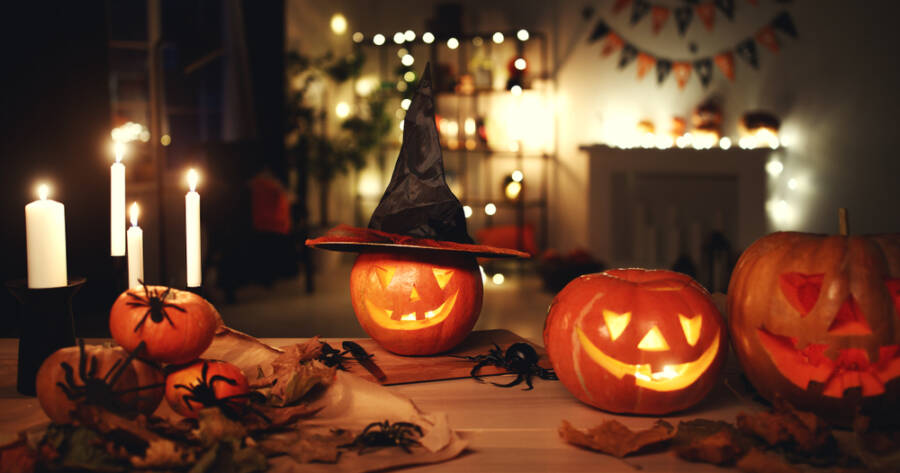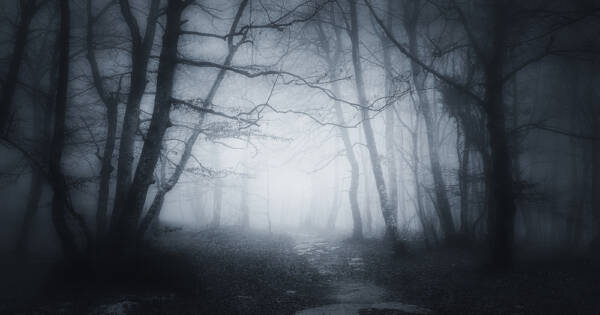Halloween is the spookiest time of the year. However, as you prepare to send shivers down the spines of your friends and family, you may not have given much thought to the environmental footprint that this holiday conceals.
In the UK alone, more than 8 million pumpkins are thrown away each year over Halloween. This amounts to about 18,000 tonnes of pumpkins going to waste that would have been eaten.
But that’s not the extent of it. Halloween has evolved into a commercial money-spinner, with store shelves brimming with plastic costumes, electronic and disposable decorations, and bags of plastic-wrapped sweets – most of which will eventually find their way into landfills after the festivities end.
If you’re looking to partake in the spooky festivities of Halloween, here are five tips to ensure you can give people a good fright without harming the environment.
1. What to do with your pumpkin
Pumpkin carving isn’t just a problem because of food waste, a huge amount of resources – including fuel for lorries and fertilisers – go into producing the mountain of pumpkins that are used over Halloween.
If you do plan on carving a pumpkin this year, make sure you throw it into a food waste bin. Pumpkins that end up in landfill emit methane as they decompose. Methane is a potent greenhouse gas that contributes to climate change.
A better approach may be to forgo the whole pumpkin thing altogether. Instead, consider investing in a reusable decoration (preferably one that’s not made from plastic) or crafting your own creepy creation out of something you already have in your home to put outside your door.
But if you still want to experience the fun of carving a pumpkin, then make sure it isn’t wasted by baking some pumpkin pie, roasting its seeds in the oven, or simply roasting segments of pumpkin as a savoury treat (even the skin is edible).
2. Cut down on buying new
The shops are filled to bursting with Halloween decorations. However, many of these decorations – from cackling witches to vampire bat lights – are electrical. Making these products uses up substantial resources, including endless amounts of copper wiring and some of the rarest materials on the planet, such as lanthanum, an element found in modern television sets, energy saving lamps and optical lenses.
When these decorations are thrown away, they contribute to the growing electrical waste crisis. In 2019, global electrical and electronic waste generation stood at around 54 million tonnes, amounting to around 7.5kg per person. This generation rate is expected to increase significantly in the future.
So consider if you really need to buy new. You may find you already have enough lying around to transform your home into a haunted house. Christmas lights, for example, could double up as a creepy addition to your Halloween decor.
You may also have some other old bits and pieces that you can remake into something suitably spooky. Old dolls can be given unsettling new attire crafted from fabric scraps (although they might be creepy enough by themselves). And bottles can be filled with water and a few drops of food dye to make a collection of witches’ brews.
 Shutterstock: Evgeny Atamanenko
Shutterstock: Evgeny Atamanenko3. Ditch single-use plastic
We all like being able to hand out some sweet treats to trick-or-treaters. But sweets are often individually wrapped in plastic. Many single-use plastics don’t get recycled and, because plastic doesn’t break down naturally, it can stay in the environment for hundreds of years.
Instead of plastic-wrapped treats, think about getting something in paper packaging. If you have the time, then maybe you could make some sweat treats yourself to hand out.
4. Make your own costume
Most of the Halloween costumes you can buy are made out of plastic. In fact, an investigation by Hubbub, an environmental charity, found that about 83% of the materials used to make the seasonal outfits available at 19 supermarkets and retailers in the UK were plastic.
These outfits not only contribute to the accumulation of plastic in landfills, they are also a source of harmful microplastics. These minuscule plastic particles have been found almost everywhere, including in water sources, marine life, human bodies, and now even in the clouds.
Even if you don’t throw away your costume, tiny plastic fibres are released from the fabric every time you wash it. These fibres ultimately find their way into the environment through the wastewater system.
So ditch the plastic wig and look at what you already own. Old clothes can be torn up to give the look of a horrifying zombie. And, although it may be an old standby, everyone has an old sheet somewhere that can be used as a ghost costume.
5. Less is more
Sustainability is all about leaving the world in a way that future generations can enjoy as good a quality of life as we do. A crucial element in making this future a reality is only using what we need instead of an excess.
So, when making choices about how to have a happy Halloween, think before you consume. Do you need to buy a load of prepackaged food? Or can you make your own pumpkin pie? Do you need to get in a car to go trick or treating? Or can you do it locally on foot?
By following these tips, you can have a fun, freaky – but also sustainable – Halloween.
Alice Brock, PhD Candidate in Environmental Science, University of Southampton
![]()
This article is republished from The Conversation under a Creative Commons license. Read the original article.






